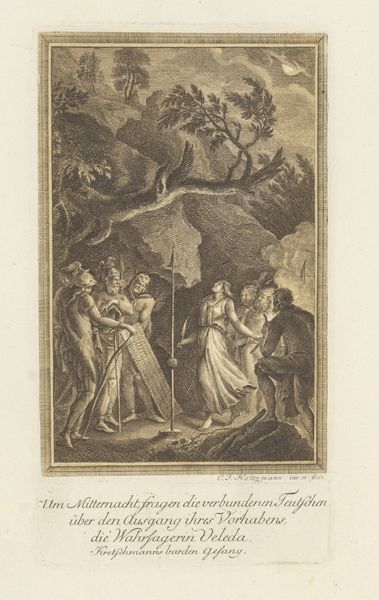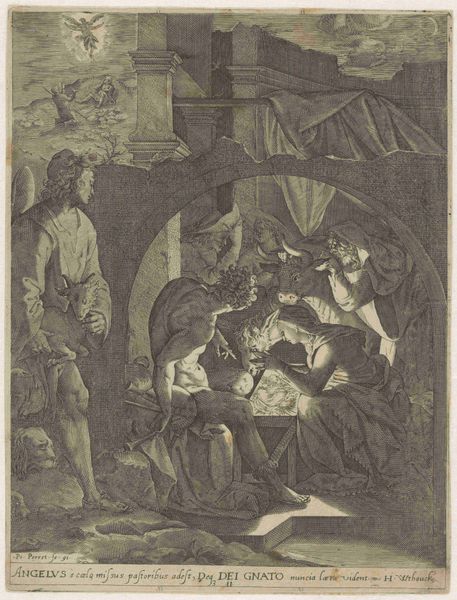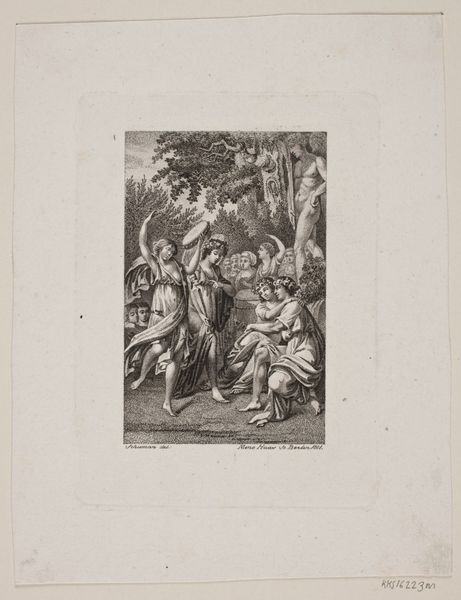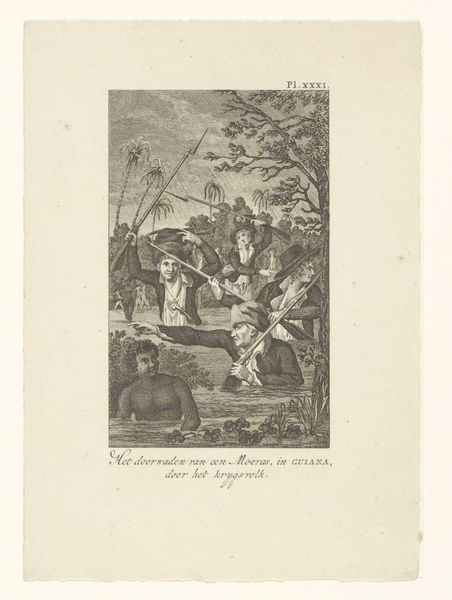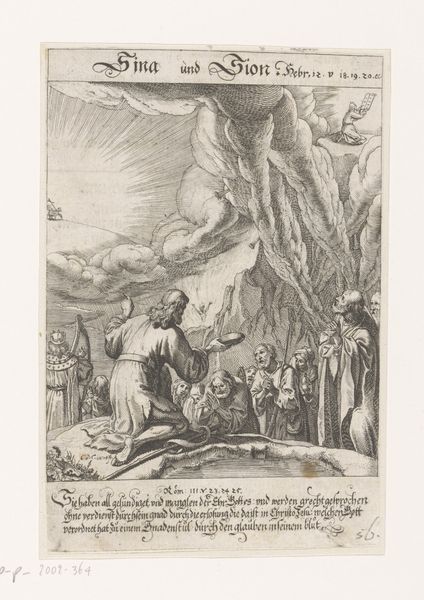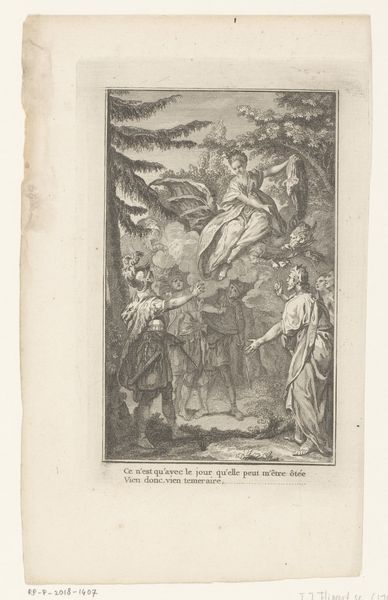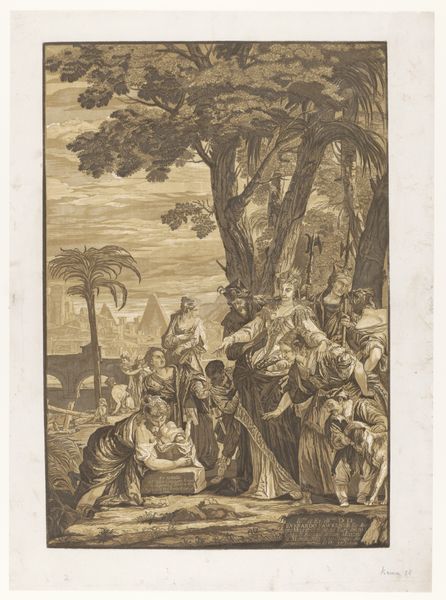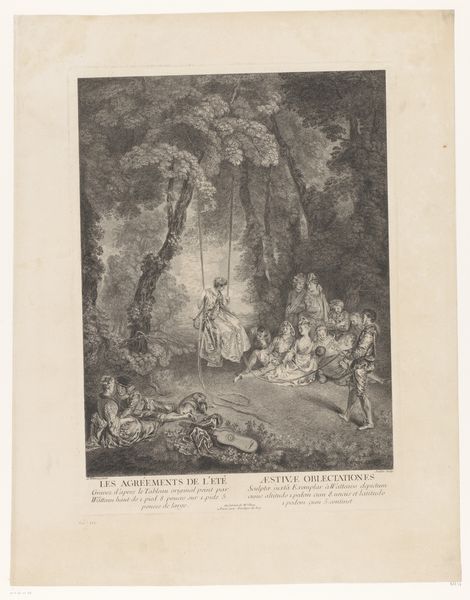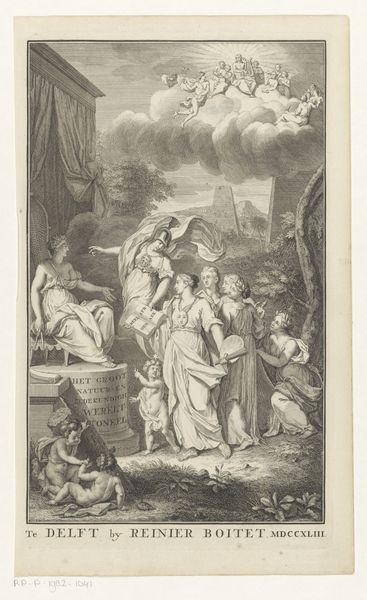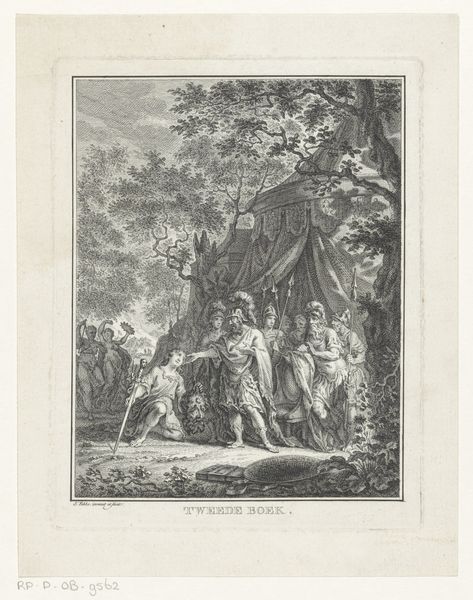
Dimensions: height 189 mm, width 148 mm
Copyright: Rijks Museum: Open Domain
Curator: Let's examine this engraving by Simon Fokke from 1766 titled "David takes leave of Michal." It depicts a scene from the Old Testament in a very characteristic baroque style. Editor: My immediate impression is of a scene drenched in dramatic light and shadow. There’s an almost theatrical quality to the figures and their poses, set against what seems to be a rocky outcrop. Is it meant to evoke some form of precarity? Curator: The chiaroscuro is indeed masterful, especially considering it is achieved solely through line work in this engraving medium. It heightens the emotional intensity of the moment. Look how the artist has employed fine, closely spaced lines to create areas of deep shadow, and then contrasting areas of open space for illumination. Editor: It’s compelling to observe this intimate farewell as also part of David's political trajectory. Michal, the daughter of King Saul, was instrumental in saving David’s life from her father's plot to kill him. Their parting isn't just personal; it's embedded within a story of political strife and shifting power dynamics between men. I also note that David, the supposed protagonist of this departure, seems strangely passive and overshadowed. Curator: The composition directs our gaze towards Michal, which is reinforced by her central position and lighter garments. The use of line further articulates a sophisticated interplay of form and volume. The folds in the clothing, for example, don’t merely depict fabric, but create dynamic patterns that guide the eye around the scene. Editor: Absolutely. The gazes, hand gestures and implied movement toward him reinforce a system of control that perhaps challenges what an innocent love between equals may actually resemble when royal authority intervenes. I find myself contemplating if the so called narrative actually privileges patriarchal conventions. Curator: The linear style, whilst refined and indicative of the Baroque period, also carries with it limitations. Compared to painting, the engraving struggles to achieve certain nuances of color or texture, which lends the scene a rather static quality. Editor: That "static quality," as you term it, reads differently when contextualized historically. Perhaps its about conveying societal expectations upon each person within a court that dictated such calculated performances for survival, especially for women. It speaks volumes about the compromises one must do. Curator: A compelling analysis, thank you. Editor: It seems relevant still, unfortunately.
Comments
No comments
Be the first to comment and join the conversation on the ultimate creative platform.
